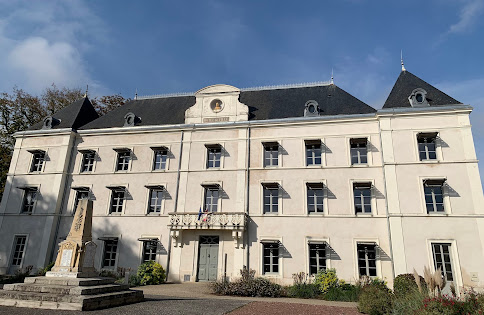
Moulins railway bridge Jean-François Cail 1858

Poitou-Charentes myths, legends and history - Jean-François Cail
Today is Saint Clement’s day, patron saint of metalworkers and blacksmiths, so the perfect day to share the story of local industrialist, Jean-François Cail who was a legend of a different kind.
 |
| Jean-François Cail, Chef-Boutonne |
Who was Jean-François Cail?
If you have ever visited our local town of Chef-Boutonne in the south of the Deux-Sèvres department, you may have noticed the name Cail pop up here and there. The main square where the Saturday market is held is Place Cail, the lycée (secondary school) is named Jean-François Cail and busts of the very same man can be found on a roundabout, set high up on the wall of the Hôtel de Ville and outside the cultural centre housing the cinema and library. So, who was Jean-François Cail?
Born in a tiny house on an alleyway in Chef-Boutonne in 1804, Jean-François was the third of eight children in a family too poor for him to continue his education beyond the age of twelve. Even at this young age, he had vision and ambition, making a simple potato grater that he sold at the weekly market. In this rural community where many relied on farming to survive, bread was a staple food, that would have been in short supply if the wheat crop failed. Potatoes were typically dried and ground to make a flour substitute, so the ability to grate potatoes made this process much easier for the 19th century housewives. Shunning the life of a farm labourer, Jean-François became an apprentice boiler maker, working with copper and iron to make and repair cauldrons, pots and stills. And so began a journey that took him from Chef-Boutonne to Nantes and eventually Paris, in 1824.
 |
| Model of the Crampton, Château de Javarzay |
Working alongside chemist Charles Derosne in Paris, Jean-François Cail went on to achieve great things. Their knowledge complimented each other’s, and they revolutionised the sugar refining and distillation industries, with Cail taking over the company when Derosne retired. Always looking ahead for the next project, he purchased two rural domains growing sugar beet and farming cattle, where he developed agricultural methods to make farming less labour intensive, including using steam engines for threshing. Jean-François also became the first French manufacturer of the British designed Crampton steam locomotive and as well as constructing metal infrastructure for the railway network, his company designed and built the main building at the centre of the Universal Exhibition in Paris in 1867. In a nod to his early years, during the siege of Paris in the early 1870’s he turned some of his factories into mills to produce flour to help feed the starving population.
 |
| Hôtel de Ville, Chef-Boutonne |
Having left Chef-Boutonne with six francs in his pocket, he died with an estimated wealth of twenty-eight million gold francs, but never forgot his humble beginnings. He was one of the pioneers of social benefits, offering his Parisian workers housing and health care and he bought what is now the Hôtel de Ville in Chef-Boutonne, refurbishing it to use as an old people’s hospice and hospital for the war wounded.
 |
| Eiffel Tower - CAIL |
He now lies in the Père Lachaise cemetery in Paris, and Gustave Eiffel honoured him by including him as one of the seventy-two scientists, engineers and mathematicians who have their names engraved above the arched feet of the Eiffel Tower.
Most visitors to the museum at the Château de Javarzay, where there is an entire floor dedicated to Monsieur Cail, leave with a sense of disbelief that someone who had such an impact on the French industrial revolution, isn’t as well-known (even in France) as his compatriots like Eiffel or Isambard Kingdom Brunel.
 |
| Jean-François Cail museum, Château de Javarzay |

No comments:
Post a Comment
Please don't be shy, I love to hear from you.